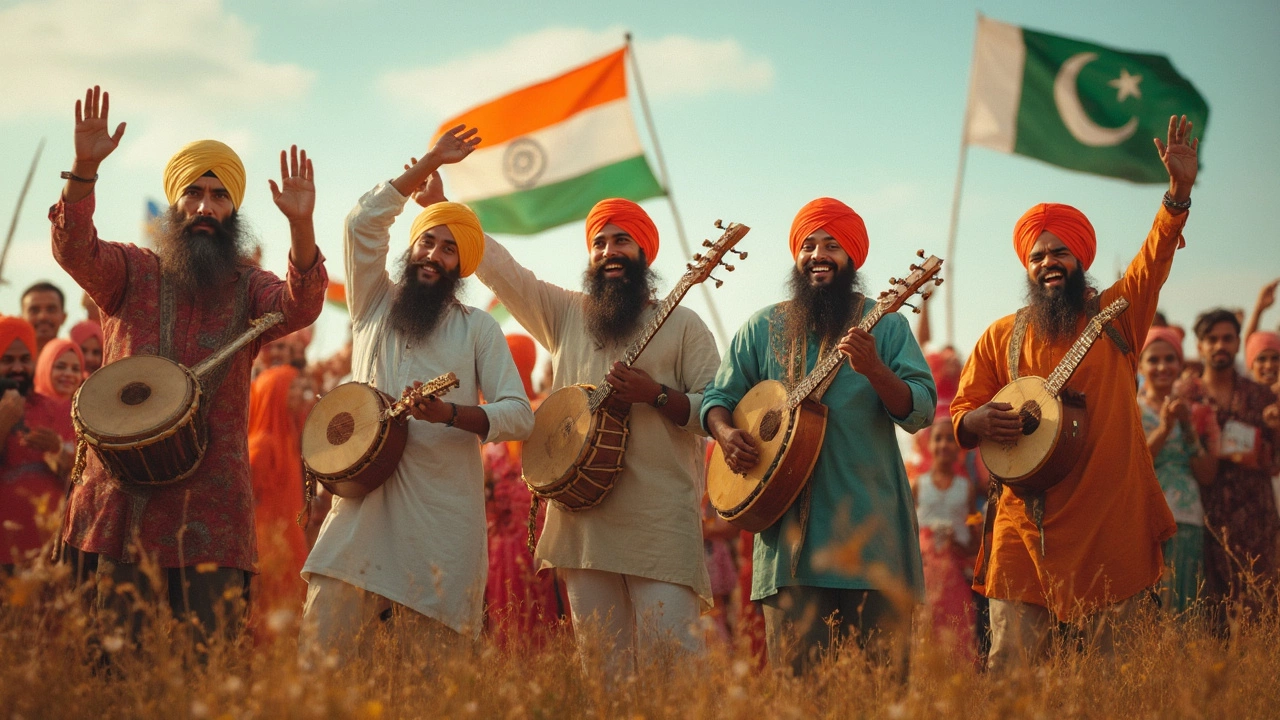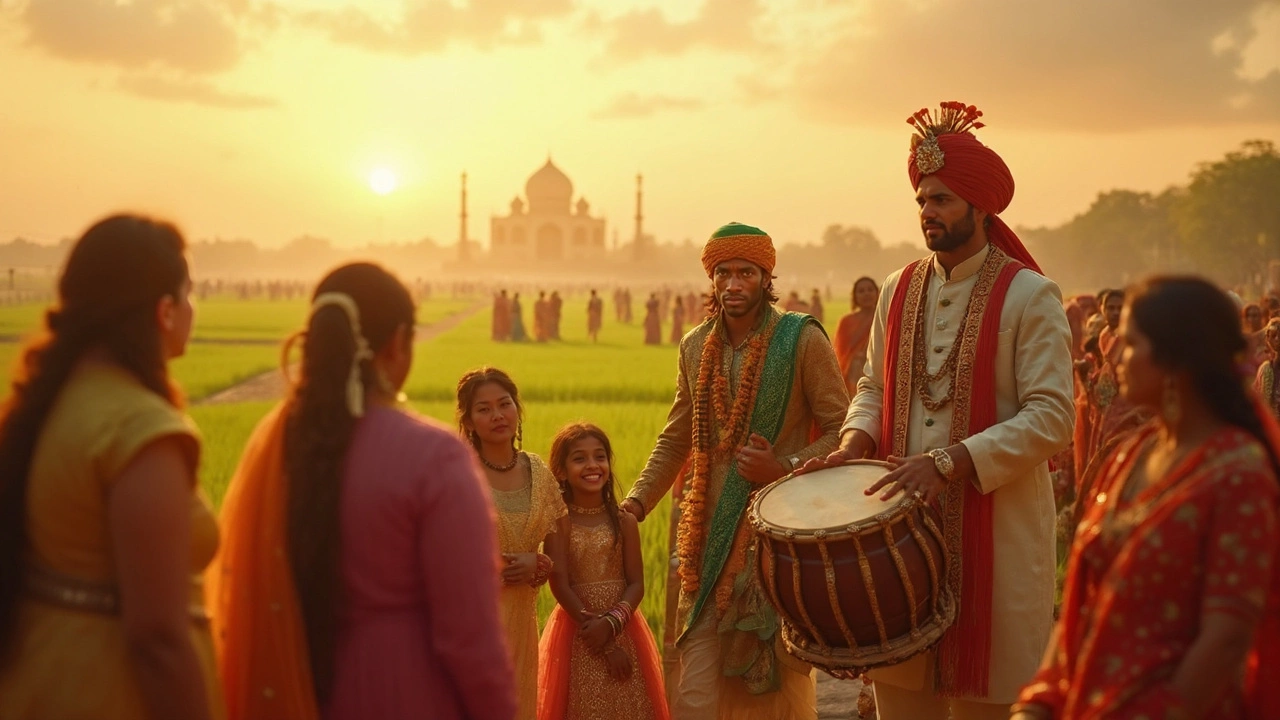Start asking around, “Are Punjabis Indian or Pakistani?” and you’ll get all sorts of answers—some proud, some confused, some a little defensive. That’s because Punjabi identity isn’t built on one country’s flag. Instead, think of Punjab as a massive region with its own flavor, stretching across the border of India and Pakistan.
Punjabi culture—especially the music—is everywhere from New Delhi weddings to the streets of Lahore. But how did Punjabis end up split between two nations? What does that mean for folk songs and traditions you still hear today? If you want to understand why a Punjabi dhol sounds just as wild in Mumbai as in Multan, you’ve got to look at both sides of the border. Stick around. Knowing this stuff will help you actually enjoy and understand Punjabi songs, no matter where you come from.
- Where Punjabis Originally Come From
- History: Why Punjab Got Split
- Punjabi Folk Songs on Both Sides
- Culture That Doesn’t Care About Borders
Where Punjabis Originally Come From
The word Punjabi actually comes from “Punjab,” which means “land of five rivers.” If you look at a map, Punjab is a big stretch of land right at the top of the Indian subcontinent, crossing the border between northwestern India and eastern Pakistan. These five rivers—Beas, Chenab, Jhelum, Ravi, and Sutlej—made this area super fertile and let people settle here thousands of years ago. Some of the oldest human remains in South Asia are from this region.
Punjabis didn’t just show up one day—they’re connected to ancient farmers, warrior clans, and traders who mixed over centuries. So when historians talk about old civilizations, like the Indus Valley Civilization (Harappa and Mohenjo-Daro), they’re talking about ancestors of today’s Punjabis. This region saw everything from Alexander the Great’s armies to big empires like the Mauryas, Mughals, and the Sikhs.
Here’s a quick look at why Punjab’s location has always mattered:
- Punjab sits at a crossroads—anyone moving between Central Asia and South Asia usually passed through here.
- It's been a melting pot, mixing language, music, food, and traditions from invaders and locals alike.
- Every big historical shift in the region—like the rise of Sikhism or the Mughal rule—changed Punjabi life in some way.
Just to see how old and mixed-up Punjab’s population is, check out this rough timeline:
| Time Period | Who Lived Here |
|---|---|
| 2500 BCE | Indus Valley folks |
| 326 BCE | Locals plus Alexander’s army |
| 1000 CE | Rajputs, early Muslim sultans |
| 1469 | Guru Nanak is born, Sikh culture begins |
| 1700s-1800s | Sikh Empire, then British colonial rule |
| 1947 | Partition splits Punjab between India and Pakistan |
Punjabis today? You’ll find millions in both countries, each keeping old traditions alive whether they’re living in Amritsar or Lahore. The basics—food, language, music—have deep roots that outlived borders and rulers.
History: Why Punjab Got Split
Before 1947, you wouldn’t hear people in Punjab asking if they were Indian or Pakistani—they were just Punjabi. So what happened? The answer is Partition, one of the biggest shake-ups in South Asia’s history. The British ruled India for almost 200 years, but by the mid-1940s, India was pushing for freedom. The British decided to split the region into two countries based mainly on religion: India (for Hindus and Sikhs) and Pakistan (for Muslims).
Punjab, right in the middle, was chopped in half almost overnight. All hell broke loose. Families got split, and huge crowds of people moved across the new border. The stats are wild—nearly 14 million people crossed the line, and about one million lost their lives during the chaos.
Here are a few quick facts to keep things clear:
- Partition happened in August 1947.
- Punjab was split into East Punjab (India) and West Punjab (Pakistan).
- Punjabi families were forced to leave homes, jobs, and friends behind.
| Year | Event | Main Impact on Punjabis |
|---|---|---|
| 1947 | Partition of Punjab | Millions forced to migrate; loss of property, violence, divided communities |
| 1955 | Punjabi language movement in Pakistan | Push to keep language and culture alive despite new national rules |
| 1966 | Punjab Reorganization Act in India | Punjab state shrunk, but kept Punjabi identity in India strong |
This split didn’t just divide land—it divided families, history, and music. That’s why today you’ll find Punjabi culture on both sides of the border. The stories and songs from those years are still sung at weddings and gatherings—the pain, hope, and crazy stories all mixed in. You can ask anyone with Punjabi roots: every family has some wild Partition story.

Punjabi Folk Songs on Both Sides
Punjabi folk songs have survived division, wars, and even the pressures of Bollywood. Whether you’re on the Indian side or the Pakistani side of Punjab, the songs hit the same topics: love, heartbreak, farming, and family. Here’s the twist—despite splitting into two countries back in 1947, folk music from both sides sounds super similar. You’ll hear the same drum rhythms, see the same wild bhangra moves, and notice many songs carrying the old Punjabi language—even if some words have a slightly different accent now.
Let’s get specific. In India, Giddha and Boliyaan are huge at weddings, while Tappa and Jugni have been sung for generations. On the Pakistani side, you’ll catch dhamaal at Sufi shrines, and Heer-Ranjha ballads sung on radio stations. Singers like Surinder Kaur (India) and Alam Lohar (Pakistan) both became legends with almost the same style—one just happened to grow up on another side of the border.
Here’s a quick look at some classic Punjabi folk songs that are beloved in both India and Pakistan:
- "Heer" – The story of Heer and Ranjha exists in both countries, and it’s still sung at gatherings on either side.
- "Jugni" – The wandering spirit theme is everywhere, from Punjab’s truck stops to urban music videos.
- "Balle Balle" – A go-to phrase and party song, you’ll hear this at celebrations in Amritsar and Lahore without missing a beat.
Now, if you look at the instruments, it’s the same dhol, tumbi, and chimta. You can’t draw a neat line between Indian and Pakistani Punjabi music gear. If you walk into a rural fair in either country, you’ll see the same setups—old men playing the algoza (double flute), kids trying out the dhol for the first time.
Here’s a bit of data showing just how much Punjabi folk music has crossed borders and stayed alive:
| Country | Estimated Annual Punjabi Folk Festivals (2024) | Popular Regional Folk Song |
|---|---|---|
| India (Punjab) | 120+ | Heer, Giddha Song |
| Pakistan (Punjab) | 90+ | Jugni, Heer |
That’s why when you’re grooving to a Punjabi wedding song anywhere in the world, it doesn’t really matter which side the tune started on. The Punjabi beat is bigger than any border. If you’re learning a Punjabi folk song or just enjoying it, remember half the lyrics and tunes probably got their start way before anyone worried about being Indian or Pakistani.
Culture That Doesn’t Care About Borders
If you think a border keeps people apart, you’ve never watched two Punjabis from opposite sides of Wagah trade stories—or swap a playlist. Punjabi culture is everywhere, blasting out of tractors in India and beat-up radios in Pakistan. Borders tried to split families and fields, but they didn’t stop folk music, food, or jokes.
Let’s be real: songs like “Jugni,” “Heer,” or the classic “Mirza Sahiban” aren’t owned by India or Pakistan. They’re shared. This stuff started centuries before passports were a thing. Even today, top singers from both sides cover the same tracks, sometimes using the exact same lyrics—no one cares if it’s Amritsar or Faisalabad dialing up the dhol beat.
Got relatives in both countries? You’ll see almost zero difference in weddings, dance moves, or the way people celebrate Lohri or Vaisakhi. It’s like someone just changed where the road map lines are, but the everyday stuff—the “real Punjab”—stayed put. Here’s a quick look at just how equal things are on both sides:
| Element | Indian Punjab | Pakistani Punjab |
|---|---|---|
| Main Language | Punjabi (Gurmukhi script) | Punjabi (Shahmukhi script) |
| Folk Songs | Bhangra, Giddha, Heer | Sufi Qawwali, Bhangra, Heer |
| Main Celebrations | Lohri, Vaisakhi | Eid, Basant, Vaisakhi |
| Traditional Dress | Salwar-Kameez, Patiala Suit | Salwar-Kameez, Kurta Pyjama |
| Instruments | Dhol, Tumbi, Chimta | Dhol, Algoza, Sitar |
So if you’re obsessed with Punjabi music or food, don’t think too hard about where it comes from—just enjoy the energy. It’s proof that culture is stubborn. No matter how many lines or checkpoints you draw, Punjab beats to the same rhythm on both sides. If you want to really experience Punjabi folk tunes, just keep your ears open—from Canada to Karachi, you’ll feel that vibe.
